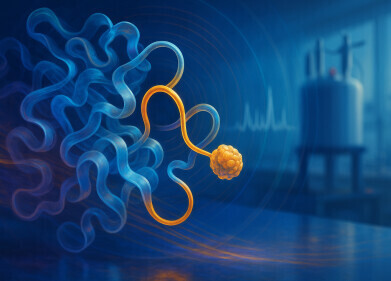Microscopy & microtechniques
How Do Humans Anticipate the Future?
Dec 28 2018
You don't need a time-turner or a crystal ball to predict the future. Instead, scientists at Berkeley's New University of California maintain the human brain can actively predict the future using two internal clocks.
From tapping the beat to a favourite song to lightly stepping on the gas pedal just before the light changes or successfully catching a flying baseball, the brain uses two different regions to calculate movement. Memories from past experiences are used to anticipate timing, while rhythm influences periodic events like music and speech. Both neural networks play a key role in the human ability to navigate environments and ultimately, enjoy life.
Assaf Breska, study lead author explains, "Whether it's sports, music, speech or even allocating attention, our study suggests that timing is not a unified process, but that there are two distinct ways in which we make temporal predictions and these depend on different parts of the brain."
Actively anticipating the future
The findings were published in the Proceedings of the National Academy of Sciences journal and offer a glimpse of how the human brain uses neural networks to dynamically predict the future and act accordingly.
"Together, these brain systems allow us to not just exist in the moment, but to also actively anticipate the future," says Richard Ivry, UC Berkeley neuroscientist and study senior author.
The role of neural clocks
Breska and Ivry further explored the concept of neural clocks by studying the anticipatory timing skills of people with cerebellar degeneration and Parkinson's disease. They found that rhythmic timing is directly linked to the basal ganglia, while timing cued by memory of prior experiences is linked to the cerebellum. Both are key regions of the brain that help dictate movement and cognition. The study also revealed that if one of the two neural clocks is ticking out of time, the other could hypothetically step up.
"We show that patients with cerebellar degeneration are impaired in using non-rhythmic temporal cues while patients with basal ganglia degeneration associated with Parkinson's disease are impaired in using rhythmic cues," says Ivry.
Treating neurological timing deficits
Ultimately, the study could help pioneer non-pharmaceutical treatments for neurological timing deficits, including deep brain stimulation, neural-training computer games and environmental design modifications.
"Our study identifies not only the anticipatory contexts in which these neurological patients are impaired, but also the contexts in which they have no difficulty, suggesting we could modify their environments to make it easier for them to interact with the world in face of their symptoms," explains Breska.
From mapping brain circuitry to analysing viral diseases, light microscopy is a diverse technical field. 'MICROTEC – In the Spotlight - Cost-effective light microscopy solutions' introduces the latest technology from one of the industry's leading microscopy and imaging manufacturers.
Digital Edition
Lab Asia Dec 2025
December 2025
Chromatography Articles- Cutting-edge sample preparation tools help laboratories to stay ahead of the curveMass Spectrometry & Spectroscopy Articles- Unlocking the complexity of metabolomics: Pushi...
View all digital editions
Events
Jan 21 2026 Tokyo, Japan
Jan 28 2026 Tokyo, Japan
Jan 29 2026 New Delhi, India
Feb 07 2026 Boston, MA, USA
Asia Pharma Expo/Asia Lab Expo
Feb 12 2026 Dhaka, Bangladesh

.jpg)
-(2).jpg)
















